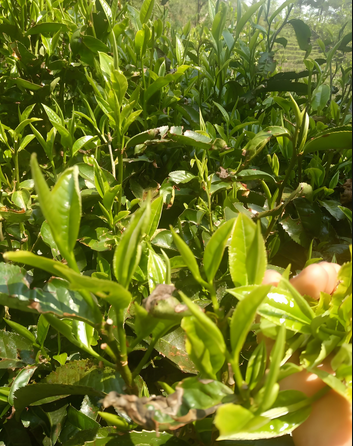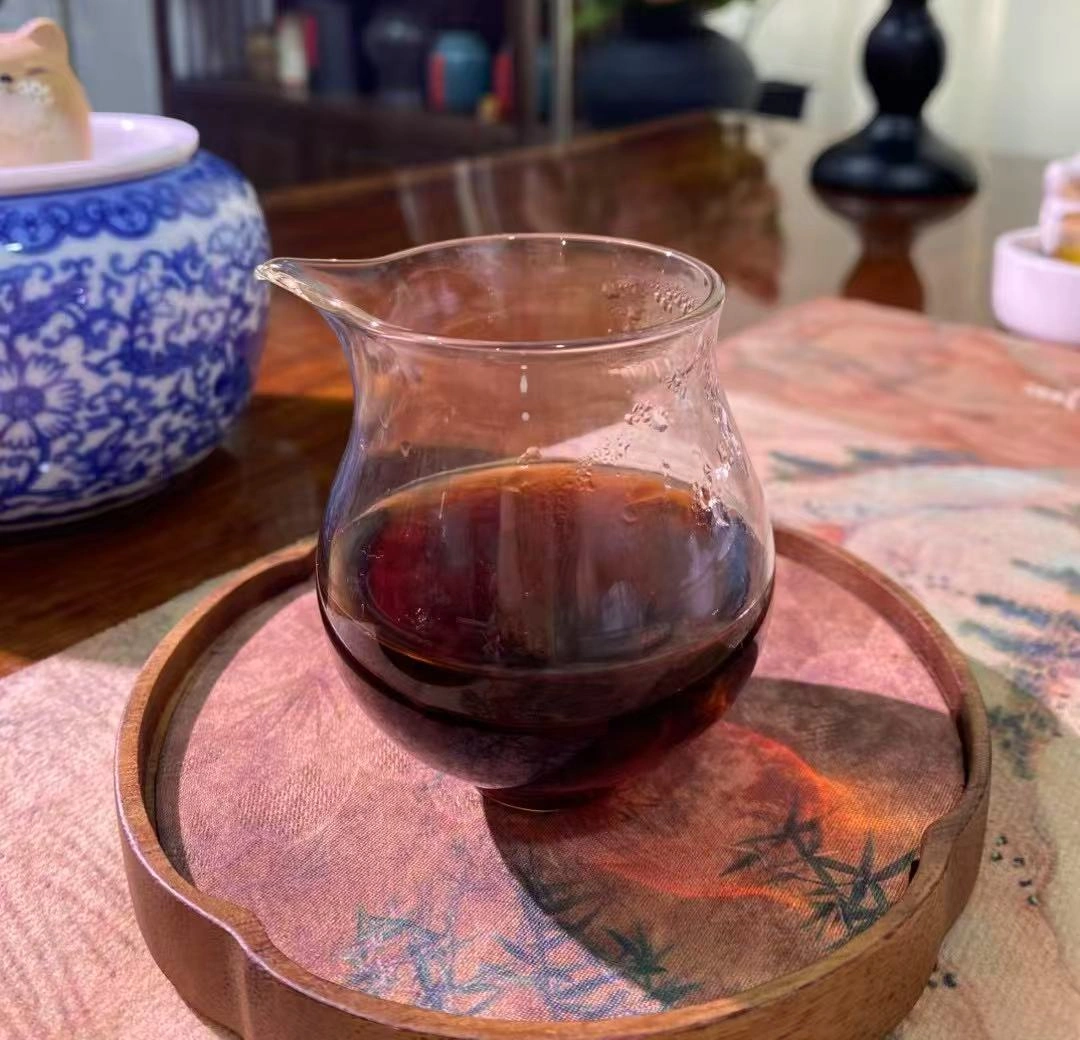Picture yourself sinking into a cozy armchair, the warm glow of morning light filtering through the kitchen window, and a fragrant cup of pu-erh tea cradled in your hands. You breathe in deeply, savoring the lush, earthy aroma that promises both comfort and vitality.
Yet as you lift that cup, you may wonder: “Are there any pu erh tea side effects I should be aware of?” While this ancient brew boasts a bounty of health benefits—metabolism boost, digestive support, and even cholesterol management—it’s not without its quirks. In this comprehensive guide, we’ll explore common side effects of pu-erh tea, unveil how drinking pu erh tea after meals can influence your well-being, and share expert tips to sip safely and sensually.
What Is Pu-erh Tea?
Born in the misty mountains of Yunnan Province, pu-erh tea is a fermented treasure with centuries of history. Loose leaves—or compressed cakes called “tuo cha”—undergo a slow, microbial fermentation that transforms their flavor into a layered tapestry: deep forest-floor earthiness, whispers of sweet cocoa, and a mellow hint of aged wood. This slow alchemy also generates unique bioactive compounds, making pu-erh more than just a delicious ritual. But it’s these very compounds—and the caffeine they contain—that can spark unwanted reactions when overindulged.

Common Side Effects of Pu-erh Tea
While most enthusiasts enjoy pu-erh tea without incident, be mindful of these potential discomforts:
Caffeine-Related Issues
Pu-erh carries moderate caffeine—enough to enliven your focus but sometimes too bracing for the unprepared. Overconsumption can trigger:
- Jitters and Nervous Energy: A racing heart, trembling hands, or restless thoughts.
- Insomnia: Late-day cups may rob you of peaceful slumber.
- Palpitations: Irregular or forceful heartbeats that leave you slightly breathless.
Digestive Discomfort
In its bold embrace, pu-erh tea can be a double-edged sword:
- Nausea and Upset Stomach: Especially if sipped on an empty stomach.
- Acid Reflux or Heartburn: The natural tannins may irritate sensitive digestive tracts.
- Diarrhea or Loose Stools: High doses can accelerate gut motility.
Heart Palpitations & Anxiety
The synergy of caffeine and bioactive fermentation byproducts may amplify:
- Anxiety or Nervous Tension: Heightened alertness that tips into unease.
- Rapid Heartbeat: A fluttering sensation that echoes with each beat.
Iron Absorption Interference
Pu-erh’s potent tannins can bind dietary iron, potentially:
- Reducing Iron Uptake: Regular heavy consumption might influence hemoglobin levels, especially in susceptible individuals.
Other Reactions
Though less common, some drinkers report:
- Headache or Dizziness: A mild throbbing or wooziness following strong infusions.
- Allergic Responses: Rare rashes or itching in those with specific sensitivities.
Pu-erh Tea After Meals: Benefits and Considerations
Benefits
Sipping pu erh tea after meals can feel like an indulgent pause—a steamy, aromatic finale that soothes and settles. Key advantages include:
- Digestive Support: Enzymes and probiotics formed during fermentation can ease bloating and promote comfortable digestion.
- Rich Flavor Contrast: The tea’s earthy depth balances the lingering tastes of a hearty feast.
- Gentle Metabolic Boost: A mild lift that encourages calorie processing without the crash of sugary drinks.
Considerations
Yet timing is everything. Drinking immediately after a heavy, greasy meal may:
- Increase Acidity: Tannins can exacerbate heartburn in sensitive individuals.
- Dull Flavors: Food fats may flatter or overwhelm the subtleties of delicate sheng pu-erh.
Tip: Wait 10–15 minutes post-meal to let your stomach settle before indulging in your post-dinner cup.
Factors That Influence Side Effects
Understanding what drives these reactions helps you savor pu-erh tea safely:
Dosage and Frequency
- High Volume Risks: More than 4–5 cups daily ups the chance of jitters, insomnia, or digestive upset.
- Moderate Enjoyment: 1–3 cups per day, spaced throughout, typically aligns with gentle stimulation and minimal side effects.
Raw (Sheng) vs. Ripe (Shou) Pu-erh
- Raw (Sheng): Younger, floral, and higher in certain catechins—may feel more “brisk” on the stomach.
- Ripe (Shou): Fully fermented, mellow, and earthy—often gentler but richer in microbial byproducts that can affect sensitive tummies.
Empty-Stomach Drinking
Consuming strong pu-erh on a bare stomach can:
- Heighten Nausea: The concentrated compounds interact aggressively with gastric lining.
- Spike Acidity: Greater risk of heartburn or reflux.
Leaf Quality & Storage Conditions
Low-grade or improperly stored pu-erh may harbor:
- Mold or Off-Flavors: Poor hygiene during fermentation invites unwanted microbes.
- Chemical Residues: Unwashed tea can carry residual pesticides or processing chemicals.
How to Minimize Pu-erh Tea Side Effects
Transform your tea ritual into a nurturing experience by following these guidelines:
Proper Brewing Techniques
- Rinse the Leaves: A quick 5-second pour of near-boiling water removes dust and “wakes up” fermentation byproducts.
- Mind the Temperature: 100°C for ripe pu-erh; slightly cooler (95 °C) for delicate raw variants.
- Control Steeping Time: Start at 1–2 minutes, then add 15–30 seconds per subsequent infusion. Avoid over-extraction, which intensifies tannins.
Adjusting Dosage & Timing
- Spacing Cups: Allow 2–3 hours between servings to prevent caffeine stacking.
- Evening Caution: Skip post-4 PM pours if you’re sensitive to sleep disturbances.
Selecting High-Quality Tea
- Source Reputable Vendors: Look for age-stamp, origin details, and organic certifications.
- Inspect the Leaves: Even color, intact shapes, and a clean, earthy aroma signal good storage.
Complementing with a Balanced Diet
- Pair with Iron-Rich Foods: Counteract tannin binding by enjoying your tea alongside lean meats or vitamin C–rich fruits.
- Light Snacks: A handful of nuts or a slice of whole-grain toast can buffer strong brews on an empty stomach.
- 🔗 For more tea brewing methods, check out the YouTube video explaining the brewing methods.

FAQs About Pu-erh Tea Side Effects
Q1: Can pu-erh tea cause insomnia?
A1: Yes—if consumed too late or in high amounts, its caffeine content can disrupt sleep patterns.
Q2: Is pu-erh safe for people with acid reflux?
A2: Those sensitive to tannins or acid should sip lightly, dilute with extra water, or choose a mild ripe pu-erh and drink pu erh tea after meals rather than on an empty stomach.
Q3: How many cups per day are too many?
A3: Generally, more than five cups daily elevates side effect risks. Stick to 2–3 moderate infusions spaced out for best results.
Q4: Will pu-erh affect my iron levels?
A4: Habitual heavy drinking may reduce iron absorption. To mitigate, avoid drinking pu-erh tea with iron-rich meals; wait 30–60 minutes after eating.
Q5: Which is gentler: raw or ripe pu-erh?
A5: Ripe (shou) pu-erh’s mellow profile tends to be less irritating, whereas raw (sheng) can feel brisker and more astringent.
Conclusion: Enjoying Pu-erh Tea Safely
Pu-erh tea invites you on a sensorial journey—steam swirling, rich aromas unfurling, and deep, layered flavors warming your soul. Yet, like any powerful elixir, it demands respect and mindfulness. By understanding pu erh tea side effects, embracing pu erh tea after meals, and refining your ritual—brewing with precision, choosing quality leaves, and pacing your cups—you can relish every sip without compromise. So steep with intention, sip with pleasure, and let pu-erh tea become a harmonious companion on your path to well-being.



